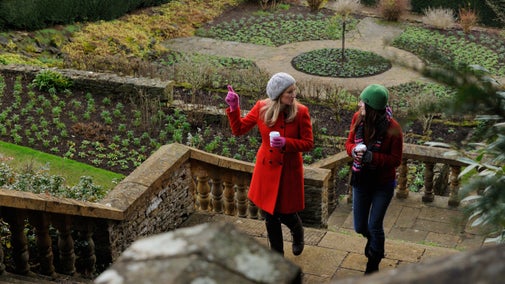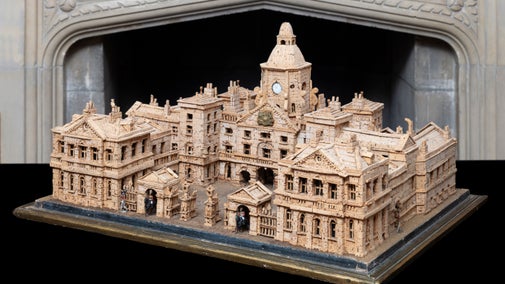The Tintoretto comes to Upton
Bought by Upton’s former owner Lord Bearsted in 1939, The Parable of the Wise and Foolish Virgins took pride of place at Upton as one of the focal points of the recently created picture gallery.
Lord Bearsted knew the picture to be of great significance and was no doubt influenced by picture dealer and restorer, Horace Buttery, who wrote to him before he bought the Tintoretto, saying: ‘Sir Kenneth Clark and other experts on Venetian painting have all been enthusiastic about this picture – a recent discovery of mine – as an important unrecorded early period work. The picture is beautiful in colour – rose-pink, grey and gold – and the subject is amusingly treated’.
Who was Tintoretto?
Tintoretto’s family name was actually Robusti and he was raised surrounded by sumptuous colour. His father was a dyer, or tintore, and it’s from this that he took the name Tintoretto, or ‘little dyer’.
Tintoretto ranks second only to Titian among the Venetian painters of his time and had a prolific and successful career. Whereas most of Titian's later paintings were commissioned for foreign patrons, Tintoretto worked mainly for Venetian clients and was the dominant figure in supplying religious pictures for the city's churches, government buildings and palaces.
The Parable of the Wise and Foolish Virgins is one of the few examples of his work on display in a historic house.
A new look through conservation
Tintoretto was a gifted storyteller and was famous for painting bold, colourful, and dramatic depictions of biblical events, such as the one on display at Upton. However, the painting’s appearance was spoiled by old restorations and layers of yellowed varnish that made the lively and complex scene feel static and flat.
A new conservation and research project has uncovered what is believed to have been Tintoretto’s original vision for the painting. The analysis provides a better understanding of what is believed to be a work from the early stages of his career.
Curator at Upton House, Michelle Leake, says: “Before the conservation work, many visitors to Upton walked past this wonderful picture without even noticing it. The image had darkened to such an extent that its original liveliness and incredible detail were very difficult to see. This project has transformed the picture and allows it to be viewed in an entirely new light.”














